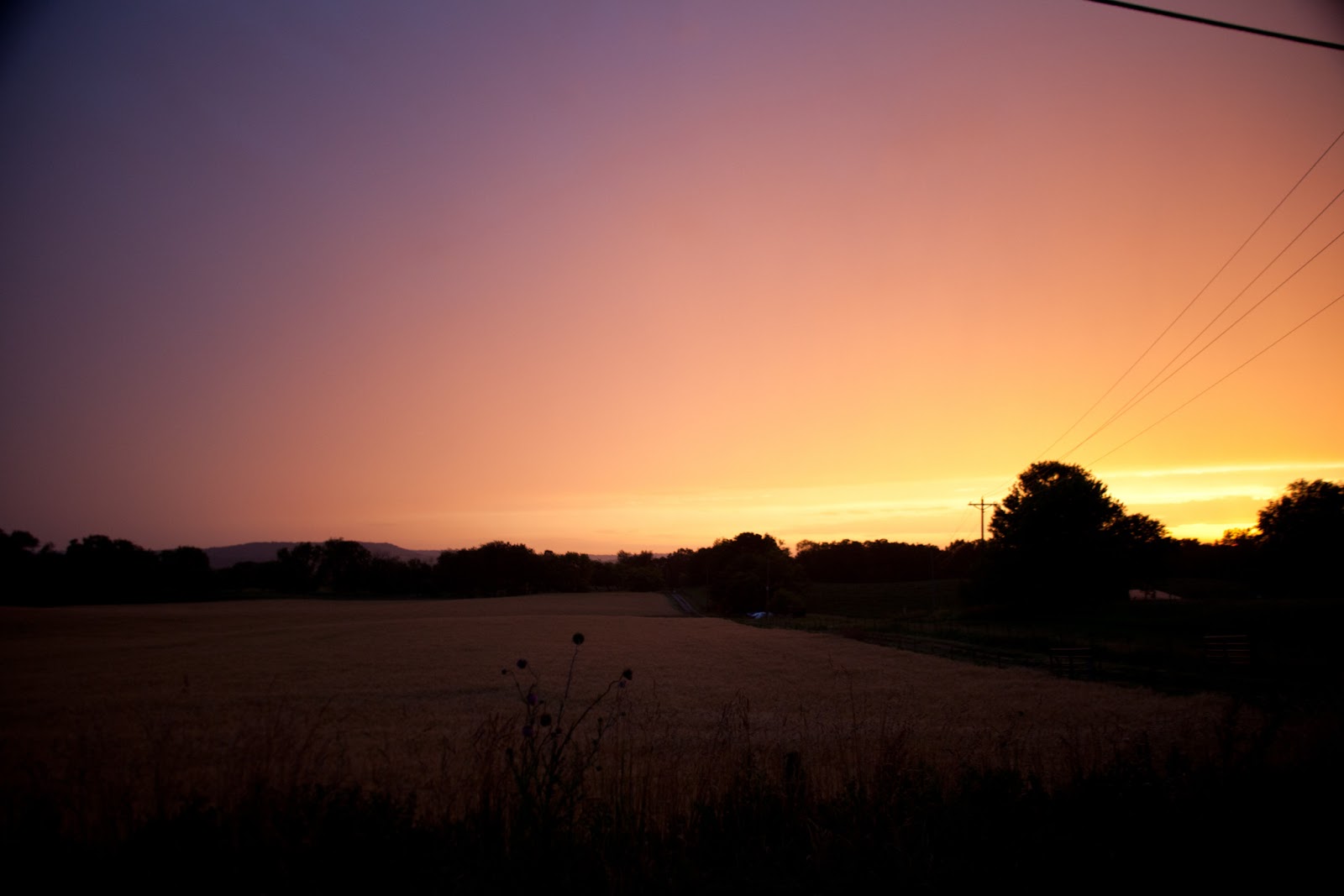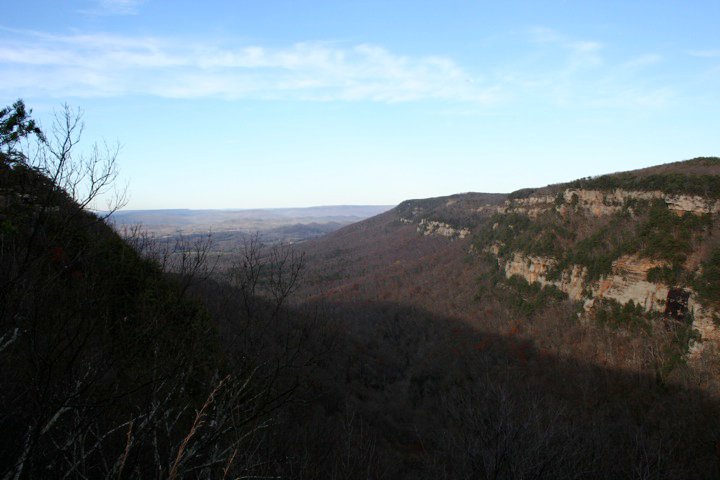Agricultural pollution occurs when a farmer saturates their
watershed with excessive nutrient run off. Agricultural runoff typically
comes from either livestock waste or fertilizers. Both of these materials contain nutrients
that help plants and microbes grow, especially phosphorus and nitrogen. When applied to growing crops, nutrient
loading can increase yields and profit.
However, when they are deposited in marine and aquatic environments they
cause eutrophication. Eutrophication
results in blooms of nuisance populations, especially algae, followed by
crashes. Eutrophication causes murky
green water that is actually congested with photosynthetic life and hypoxic
zones beneath the light penetration zone.
Animals that are subjected to the hypoxic zone die and oxygen is further
depleted as decomposers respire while breaking down their bodies.
Citizens in North Carolina were outraged
when the hog industry invaded their homes and marshes. In 1992, North Carolina was home to 2 million
hogs. Within 6 years, the state became
home to 10 million (North Carolina in the
Global Economy). Facilities called
concentrated animal feeding operations, or CAFOs, are machine-like complexes
that pack animals together as tightly as possible without harming their profit.
Sows are stored in sow stalls so small that the animals cannot even turn
around. In North Carolina, hog CAFOs
require lagoons, which are basically cesspools of hog excrement. When Hurricane Floyd struck the coast of
North Carolina, the content of the lagoons contaminated the water supply. One operation leaked 20 million gallons of
hog excrement into the New River in 1995 (North
Carolina in the Global Economy).
“CAFOs house them as tightly as possible where they never see grass or
sunlight. If you can envision one thousand chickens in your bathroom, in cages
stacked to the ceiling, you're honestly getting the picture. (Actually a
six-foot by eight room could house 1,152)” (Kingsolver). Feeding operations like these have no use for
the animal waste, so they either store it indefinitely or allow it to seep into
the water table either through leaks or during storms. Uncontrollable animal waste is dangerous for
people in the community because it pollutes the water source. It also threatens the environments that
ultimately absorb the chemicals contained in the waste.
Traditionally, farms grew both livestock and crops. When both animals and plants coexisted on the
same properties, manure composting was more common than it is today. Composting is a microbial process that breaks
down dead plants and animal waste, thereby releasing organic nutrients. Once composted, the nutrients can be taken by
plant roots. Farm waste was once
produced, composted, and applied to plants as fertilizer at the same facility. Now most farms either grow crops or livestock
but not both. Furthermore, many
plant-growing farms grow monocultures of just one crop, and many CAFOs house
one type of animal. When food production
is segregated by species, farms produce massive quantities of useless
waste. Since they cannot use it, they
have to store it in manure lagoons, which are unreliable at preventing the
waste from entering the water table.
Corn, the primary crop
grown in the United States, is a plant with a tremendous appetite for
fertilizer. According to Michael Pollan,
traditional methods of growing food were less expensive for farmers but took
longer to grow a smaller harvest.
Therefore, farmers treat their plants with synthetic fertilizers that
typically include nitrogen and phosphorus.
Vegetable farmers squeeze every ounce of profit that they can from their
land by saturating their soil with fertilizers.
Nitrogen is among the most limiting nutrients for plant growth, so
fertilizers add it to fields in shocking numbers. “Worldwide, humans create about 160 million
metric tons of nitrogen each year, compared to natural rates of terrestrial
biological nitrogen fixation, which are between 90 and 120 million metric tons
annually” (Dybas). American farmers now
feel pressure to grow crops using methods that they themselves do not trust for
their own health. Peggy Naylor, wife of
a corn farmer close to the Des Moines River, does not drink water from her own
well without filtering it through a special reverse-osmosis faucet to remove
the excess nitrates from fertilizers on the farm (Pollan). Sadly, the fertilizers impact the
healthfulness of her own resources, but they also flow down the Des Moines
River which eventually joins the Mississippi River. The Mississippi River carries fertilizers
accumulated from, “31 states and 40 percent of the contiguous United States”
(Dybas). The Mississippi River delta marshes cannot sufficiently filter the
quantity of agricultural pollution it is subjected to. Fertilizer companies recommend using a
hundred pounds of fertilizer per acre, but farmers like Peggy Naylor’s husband
exceed the recommended use by an additional 80 percent to ensure a lucrative
harvest (Pollan). This may be the
quickest way for Naylor to turn a profit, but it’s a short term method. Ultimately, it is harmful to the environment
because it causes eutrophication. Eutrophication
occurs when microbial life grows faster than their habitat can sustain. It causes nuisance blooms which rapidly
deplete oxygen.
Eutrophication
can cause nuisance blooms and hypoxic zones on a small scale, but it also
causes massive lifeless zones in the oceans.
The Gulf dead zone is a hypoxic zone in the Gulf of Mexico that
experiences progressively lower levels of oxygen every summer. Dead zones destroy and displace marine
life. Either animals flee the hypoxic
zones, or they are trapped and suffocate.
Dan Leonard, a clam farmer interviewed by Cheryl Lyn Dybas, sees the
impact of farm runoff on his business every year. Fertilizer runoff is heaviest following
spring fertilization, when most farmers have applied it to seedlings and young
crops to nourish them for the rest of the growing season. Populations bloom following the runoff, and
the hypoxic zones are most depraved of oxygen by the summer. Leonard says that, “’Every summer, the dead
zone grows, snuffing out more fish, crabs, and other animals. And we’re the perpetrators of the crime, with
our excess fertilizer and untreated sewage and other waste flowing into the
gulf’” (Dybas). Sadly, the Gulf of
Mexico is only one of 146 dead zones reported by Cheryl Dybas. Even more sadly, this figure doubles every decade. Furthermore, 43 of 146 reported dead zones
occur in United States waters (Dybas).
These figures illustrate that popular farming methods in the United
States, which transmit untreated livestock waste and fertilizer runoff to the
water table, deposit gluttonous quantities of agricultural pollution into
oceans and salt marshes.
In
addition to causing dead zones, agricultural pollution erodes soil. R. Eugene Turner describes the effects of
nutrient inundation, “One way is that the belowground biomass may be inversely
related to the nutrient loading. Root
and rhizome biomass declines with increased nutrient loading in many
freshwater, brackish, and saltwater coastal wetlands.” Because nitrogen and phosphorus are abundant
in polluted soils, plants expend less energy developing root structures to seek
nutrients. Instead, they focus their
energy on growing aboveground biomass.
Although the aboveground vegetation seems healthy, the soil and sediment
disintegrate without the root mats to hold them together.
Farms
that keep openly pastured livestock are less likely to accumulate hazardous
amounts of waste than CAFO’s because the waste is less concentrated and can
break down more rapidly. A more
sustainable approach to farming would incorporate livestock and vegetable
growing at the same facility so that livestock waste could be composted on site
for vegetable fertilizer. A system like
this does not rely on synthetic fertilizers because the plants get all of the
nutrients they need from the compost.
Plants that use industrial fertilizers only absorb about 20 percent of
the amount applied to the soil (Pollan).
Livestock waste runs off from both CAFOs and sustainably managed
livestock-vegetable farms. However, more
waste runs off from CAFOs because they house far more animals in far smaller
spaces and there is typically no need for them to compost the waste and apply
it to plants. Furthermore, farms that
rely on compost for fertilizer do not transmit additional nutrients to the
water basin, whereas 80 percent of commercial fertilizers, on top of CAFO
livestock waste, flows through salt marshes.
Sustainable
farming is not only possible but pragmatic.
“According to the USDA records from the 1990s, farms less than four
acres in size had an average net income of $1,400 per acre. The per-acre profit declines steadily as farm
size grows, to less than $40 per acre for farms above a thousand acres”
(Kingsolver). Small scale farms do not
need to rely on fertilizers in order to make a profit because of three
factors. First, they grow diverse
products, instead of monocultures which are susceptible to disease and
parasites. They also use their space
more efficiently and carefully, without trashing areas that seem
unimportant. Lastly, they sell more
directly to customers than major corporations who have nation-wide distribution
through supermarkets.
Sources
Alvarez-Rogel,
J., F.J. Jiminez-Carceles, and C. Egea Nicolas.
“Phosphorus and Nitrogen Content in the Water of a Coastal Wetland in
the Mar Menor Lagoon (Se Spain):
Relationships with Effluents from Urban and Agricultural Areas.” Water,
Air, and Soil Pollution, Volume 173 (2006): 21-38.
Butler,
Carol A., & Weis, Judith S. Salt Marshes: A Natural and Unnatural History.
New Brunswick: Rutgers University Press.
2009.
Callaway,
John C. “The Challenge of Restoring Functioning Salt Marsh Ecosystems.” Journal
of Coastal Research, Special Issue 40 (2005): 24-35.
Corman,
Sarah S., Charles T. Roman, John W. King, and Peter G. Appleby. “Salt Marsh Mosquito-Control Ditches: Sedimentation, Landscape Change, and
Restoration Implications.” Journal of Coastal Research, 28.4
(2012): 874-880.
Dybas,
Cheryl Lyn. “Dead Zones Spreading in
World Oceans.” BioScience 55.7 (2005): 552-557.
Kingsolver,
Barbara. Animal, Vegetable, Miracle.
New York: Harper Perennial. 2007.
Nelson,
Joanna L. and Erika S. Zavaleta. “Salt
Marsh as a Coastal Filter for the Oceans:
Changes in Function with Experimental Increases in Nitrogen Loading and
Sea-Level Rise.” PLoS ONE, 7.8 (2012): 1-14.
“Overview.” North
Carolina in the Global Economy. Duke
University Center on Globalization, Competitiveness & Governance,
2011. Web 18 April 2013. <http://www.soc.duke.edu/NC_GlobalEconomy/hog/overview.shtml>.
Pollan,
Michael. The Omnivore’s Dilemma. New
York: Penguin Books. 2006.
Stagg,
Camille L. and Irving A Mendelssohn.
“Restoring Ecological Function to a Submerged Salt Marsh.” Restoration
Ecology, 18.S1 (2010): 10-17.
Turner, R.
Eugene. “Beneath the Salt Marsh
Canopy: Loss of Soil Strength with
Increasing Nutrient Loads.” Estuaries and Coasts, Volume 34 (2011):
1084-1093.

























